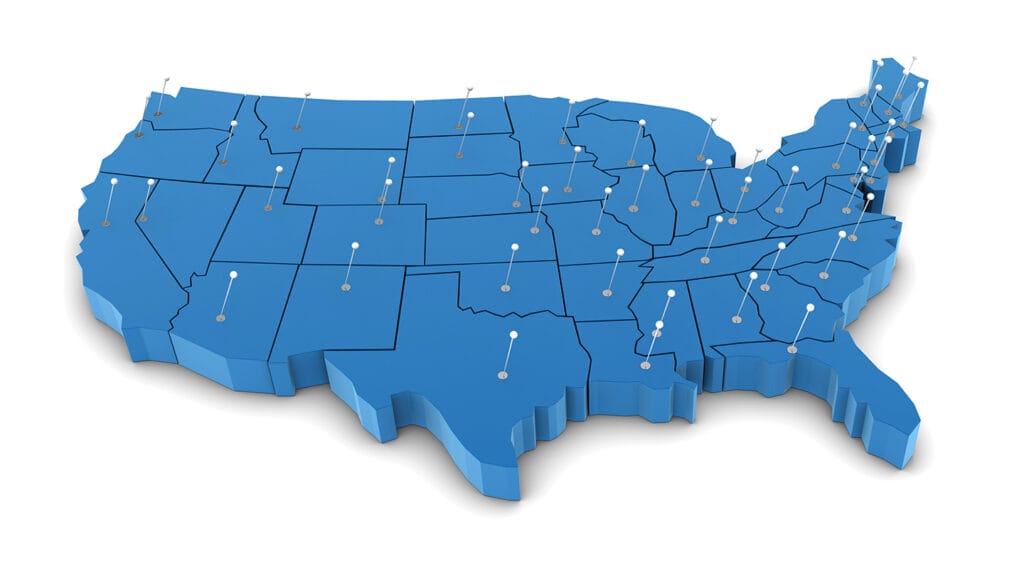
In today’s healthcare industry, care transitions can be anything but simple. To the person receiving care, the process might seem straightforward. For those within the industry, however, the process has as many challenges as getting a touchdown in football or a home run in baseball.
To score and win, you must work as a team to get past the 50-yard line or second base. The implications of failing to reach the goal are obviously more serious in post-acute care too.
The complexities that surround a change in care settings — logistics, communication, paperwork and so on — are mostly routine, but daunting nonetheless. And navigating them requires teamwork and attention to the client’s goals.
Caregivers’ strengths and capabilities can vary depending on their training, which can significantly impact a person’s care if they’re not placed in the most appropriate setting. The stark differences in care environments and their respective caregivers can further complicate the indistinct “middle line” — somewhere between the criteria for home-based care and facility-based care.
Home care and facility-based care organizations have completely different core competencies, and we should acknowledge and respect them for what they are. To return to the earlier analogy, a football team and a baseball team are both playing a sport, but the sports are vastly different.
How acuity creep impacts the middle line
Healthcare leaders have long balanced acuity creep across the middle line, but new ways of better managing the issue are emerging. Acuity creep is defined as a gradual decline in a person’s ability to live within their currently designated level of care.
Because acuity levels are usually loosely defined, organizations (both agencies and facilities) can easily fall into practices that may not be in the best interest of the person receiving care. That may show up as keeping them in their current care setting when they should move, or the reverse, moving them into another level of care that’s perhaps not necessary.
Think about football again. If neither team moves far from the 50-yard line, it’s going to be hard for either one to score a touchdown.
Acuity creep has contributed to the ambiguity of the middle line, a space that many organizations have struggled with for years. For a person receiving care caught between the standard criteria for home care and facility-based care, the middle line can be an extremely difficult space. Friends and family members might also feel confused and pressured to make the right choice for their loved one’s next step, or feel frozen in uncertainty.
Challenges with care transitions
Sometimes organizations are less motivated to move a person to another level of care because they’re losing business, and without standard acuity definitions this is an easy practice to fall into. On the opposite side of the issue, organizations sometimes push for another setting that might not provide the most appropriate care for the individual, perhaps decreasing the person’s independence.
For the person receiving care, the ambiguity of the middle line can be especially frustrating. Think about a baseball player stuck at second base. They need assistance from teammates to get to home plate and score a run.
When clients are stuck in the middle, they might feel that home-based care doesn’t provide all that they need, but they are not ready to permanently commit to a facility-based care environment. Living around the middle line for too long without a future care plan can inhibit a person from receiving the best possible care for their individual situation and needs.
A new approach to the middle line
In the post-acute space, referrals are a crucial part of an organization’s success. This is where the middle line can be used as an opportunity to partner with other organizations and increase referrals, all while doing what’s best for the person receiving care.
Gone are the days when people entered facility-based care, never to return home for a more independent style of living — with either a more formal home-based care structure or even help from friends and family. The back and forth nature of home care to facility-based care is growing in popularity, and healthcare leaders must take notice.
This level of flexibility is encouraging to those receiving care. It may motivate them to stay active, maintain independence and follow guidelines if those efforts can lead to a return to home-based care.
For this approach to work, home care and facility-based organizations should focus on their particular core competencies and respect the differences between the care settings. Baseball and football both require players who can throw and catch. But they require different talents as well.
Home care provides a certain level of comfort and independence, but we know it’s most likely not forever. As diseases progress, people require additional care that is better suited for facility-based organizations.
With an existing, healthy relationship between the two, home care and facility-based care organizations can increase their referrals, ease care transitions and do what’s best for those they serve in the community.
Healthcare is a team sport, but different care settings have their own sets of rules and playbooks. The commonality is the goal of always providing the highest level of care possible.
This comes down to partnership and communication. Referrals are increased and the person receiving care is in the most beneficial care setting for their individual needs.
With this structure, the flexibility provides peace of mind to those receiving care, and management no longer feels pressured to keep business when it’s not the best course of action. Ultimately, everyone wins.
Don Spiers is a senior product manager at Relias, providing market insight on home health, hospice and home care. Prior to Relias, he worked in home- and community-based support services for over five years, serving persons with intellectual and developmental disabilities. Don holds a Bachelor of Science degree in biological science, with a focus in microbiology, from North Carolina State University.
This article originally appeared on McKnight's Senior Living


